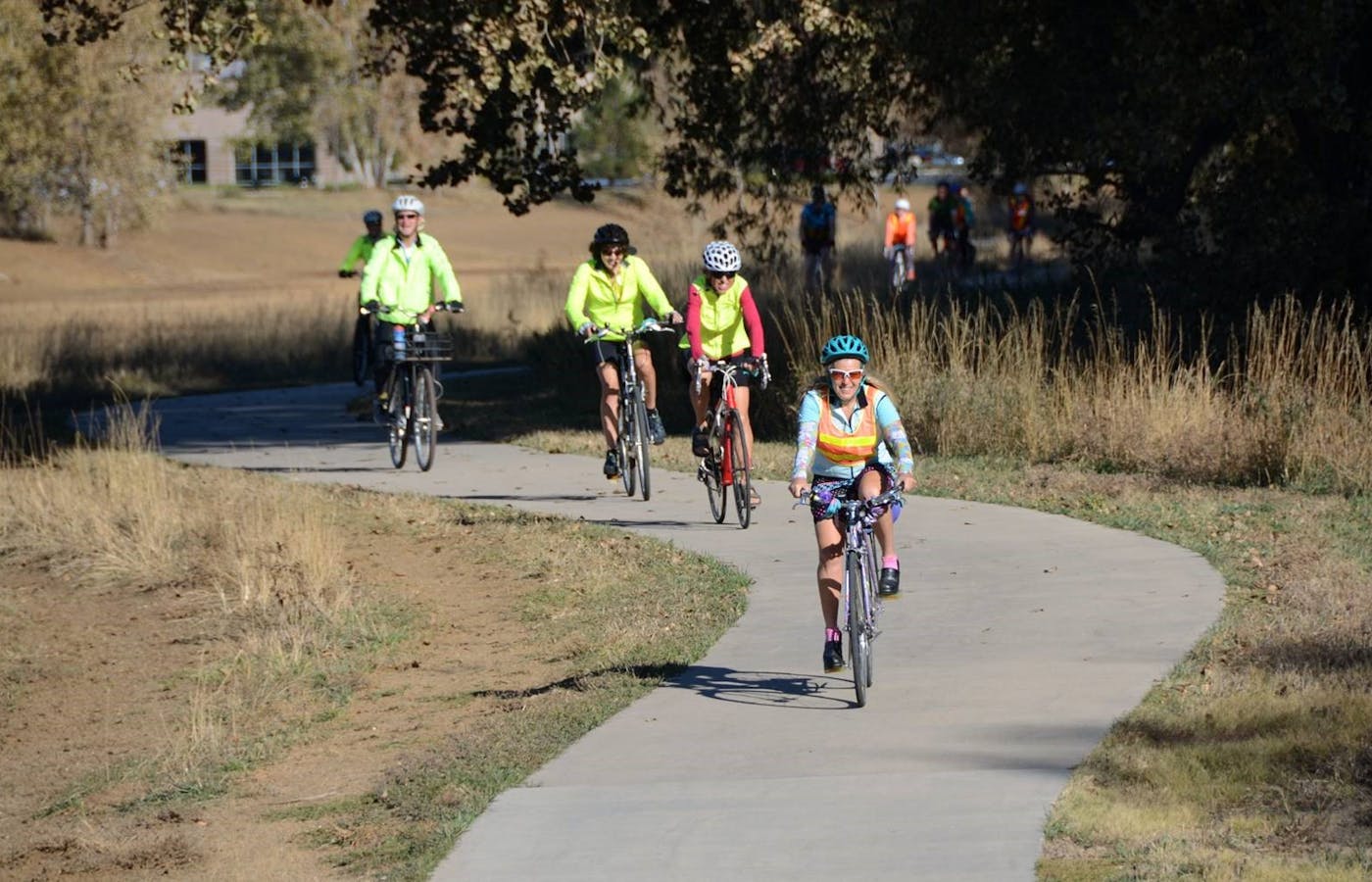Longmont’s Multifaceted Approach to Better Bicycling
By: Jack Foersterling, copywriter + editor

From eliminating parking minimums to mandating the inclusion of bike lanes in road improvement projects, biking is at the forefront of urban planning for this Colorado city.
When it comes to great places for bicycling along Colorado’s Front Range, Boulder and Fort Collins are often touted for their long histories as bike-forward cities. However, thanks to recent population shifts bringing more people to surrounding suburbs, a new wave of Colorado cycling cities is emerging.
“In recent years, there have been lots of folks from Boulder and Fort Collins who found Longmont as a place to raise their kids,” says Phil Greenwald, transportation planning manager for the City of Longmont, which is situated a half hour northwest of Boulder.
With a population of roughly 100,000 people, 10,000 of which moved within the last decade, the two Front Range cities are now similarly sized. With the added population came a need to plan for growth, and in 2016, the city adopted “Envision Longmont” — a comprehensive multimodal plan outlining strategic guidance and direction for the city over the next 10 to 20 years.
“The multi-modal plan fully lays out our vision for bicycling,” says Greenwald. “There is a heavy focus on more dollars for active transportation and making long-planned projects a reality.”
Because growth inevitably means construction, one of Longmont’s major initiatives is prioritizing the improvement of roadways for all.
“With lots of street improvement projects, we’re giving people a chance to relook at how we use roads,” says Greenwald. “Whenever we have a resurfacing project, we think about how we can improve that street for bicycling. Even with existing bike lanes, we think about how we can improve.”
Recent examples include removing street parking along Longmont’s Mountain View Avenue to add a buffer for bike lanes to increase safety. Another project removed a lane of traffic along 9th Avenue, a major arterial through town, to improve safety for pedestrians, cyclists, and drivers.
New development is also a major target for increasing bikeability, with street design standards for the city mandating that new road construction needs to recognize the needs of all road users. If a new road is designated as a collector street (one that moves traffic from local streets to arterial roads) or larger, it needs to include a buffered bike lane. The land development code also requires a certain percentage of bike parking available compared to vehicle parking for all new commercial and apartment buildings.
Plus, the city’s dedication to improvement doesn’t just stop at road development. In 2014, Longmont eliminated parking minimum requirements, an effort that is known to help reduce urban sprawl and reduce reliance on personal vehicles. In 2019, the Longmont City Council also declared a climate emergency, doubling down on the city’s efforts to get people out of cars as a key component of combating climate change. Earlier this year, the council passed a resolution to make Longmont a Vision Zero community with the goal of eliminating fatalities on their roadways.
According to Ben Ortiz, leaning on the support of community members has also had a tremendous impact on the direction of the city’s work. “We have a bicycle issues committee made up of dedicated residents who give great input on how to improve biking,” says Ortiz, transportation planner for the city. “We also have a traffic mitigation program that has been around for 20 years. The program allows neighborhoods that feel that speed limits are too fast to initiate a process to facilitate slower streets.”

Looking ahead, both Ortiz and Greenwald have high hopes for the future of biking in Longmont. Greenwald is pushing Boulder County to create a separated bikeway along Highway 119, the diagonal artery between Boulder and Longmont. While he admits most people won’t bike the entire route, it’s more about making connections in the middle, so residents can access homes and businesses in the smaller communities of Niwot and Gunbarrel that often get overlooked. He also hopes to reincorporate a bike share program back into the city that is complementary to the existing B-Cycle program in nearby Boulder, allowing folks to all use the same app and easily access bike share no matter where they go.
For the first time this year, Longmont ranked #10 for medium-sized U.S. cities in PeopleForBikes’ 2023 City Ratings, an annual program that evaluates and identifies the best places for bicycling. While this accomplishment may seem out of reach, it’s worth noting that in 2022 Longmont was ranked #88 among medium-sized U.S. cities. By prioritizing bicycling and making consistent, intentional investments, any city can do what Longmont has.
“Look at your land development code and street design standards,” says Ortiz. “For new streets, incorporate bike facilities and sidewalks. Make sure you have bike parking as a function of new development, and if you can get rid of minimum parking requirements, do it.”
“Whenever you look at a new project, incorporate the needs of the bike community,” reiterates Greenwald. “Not every project has to be expensive, either. Find the low-hanging fruit and how you can make small improvements. When you open up places where people feel safe, people will ride.”

